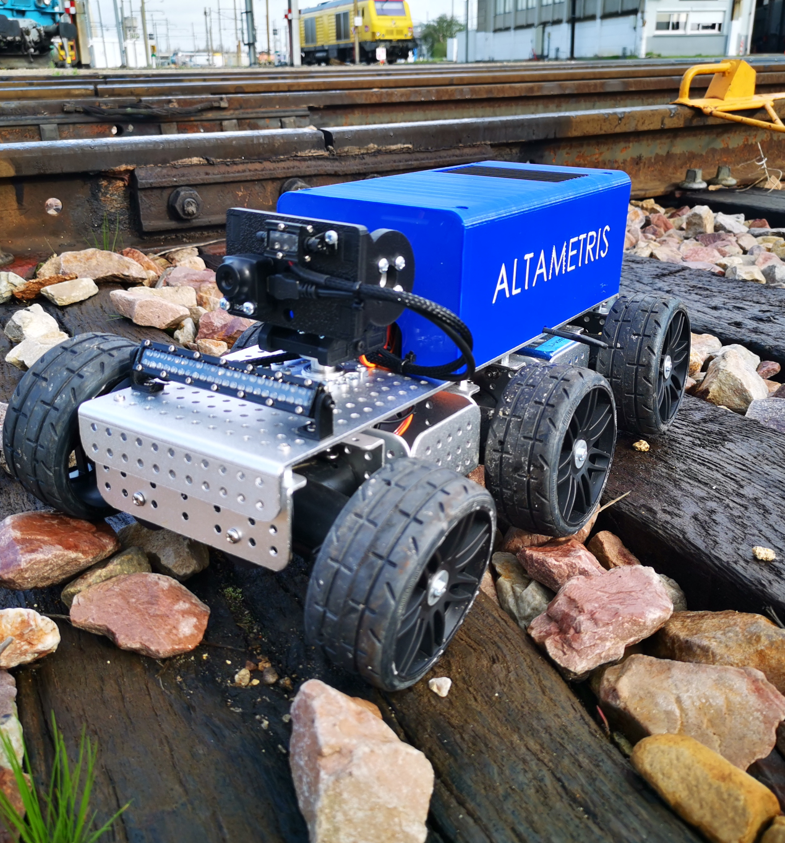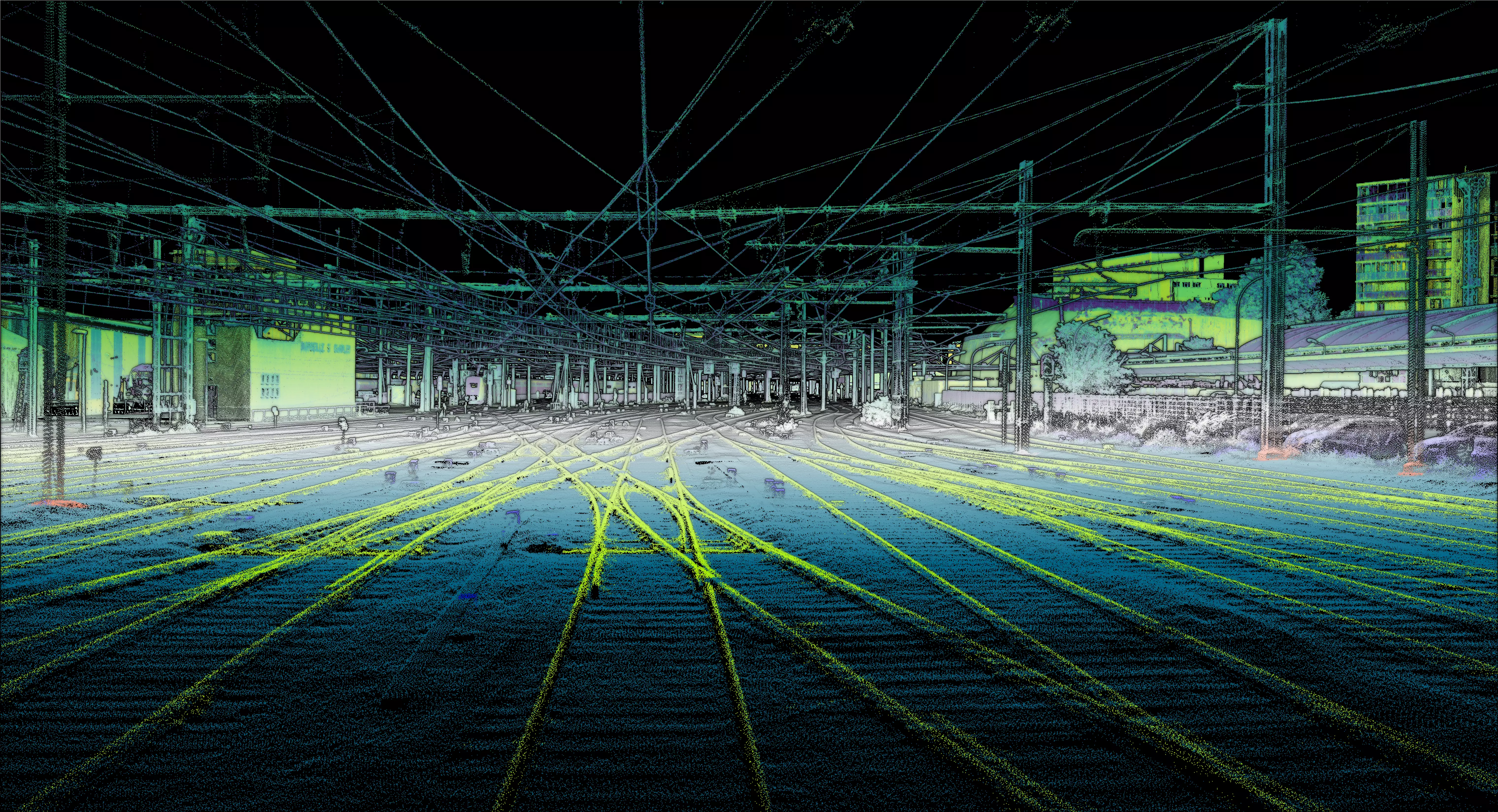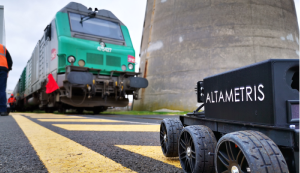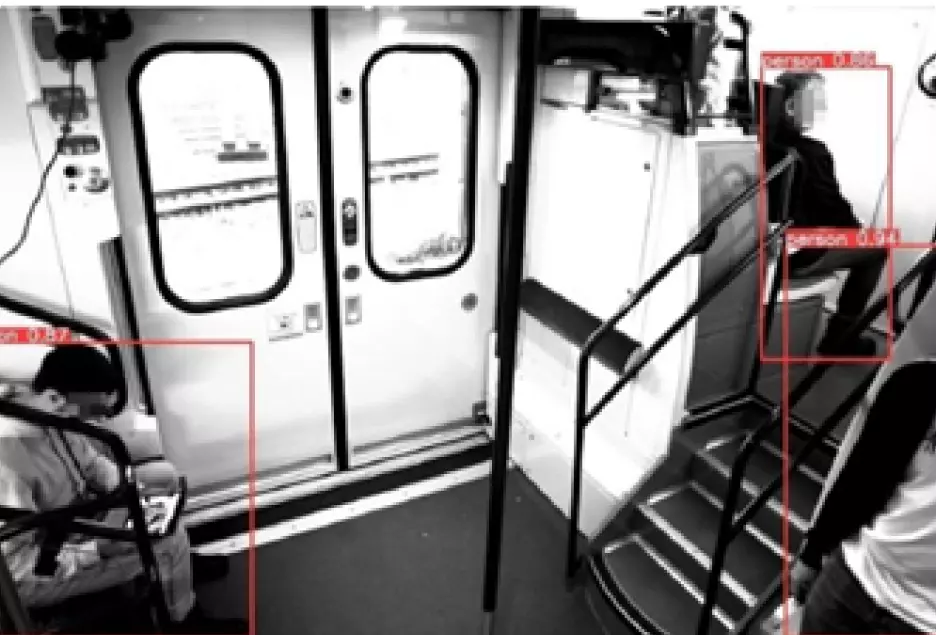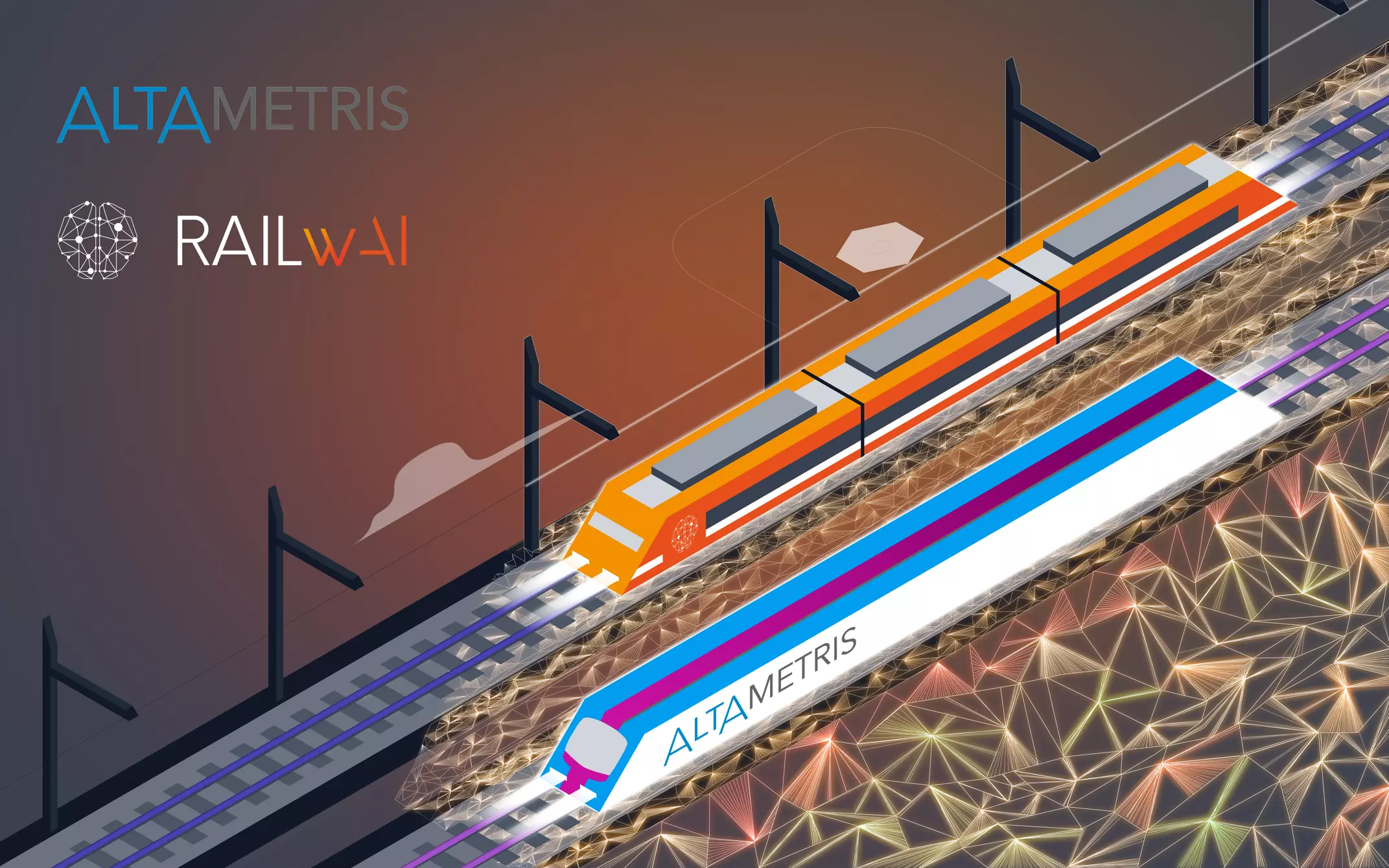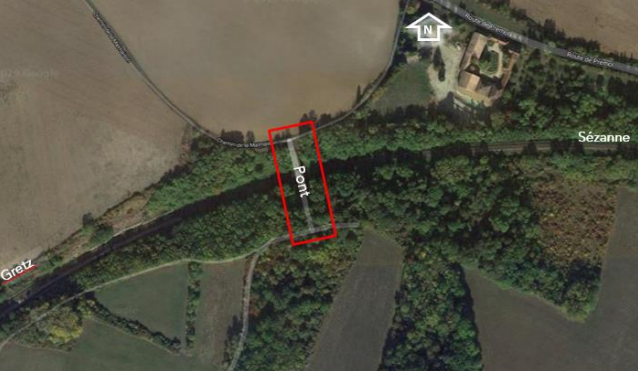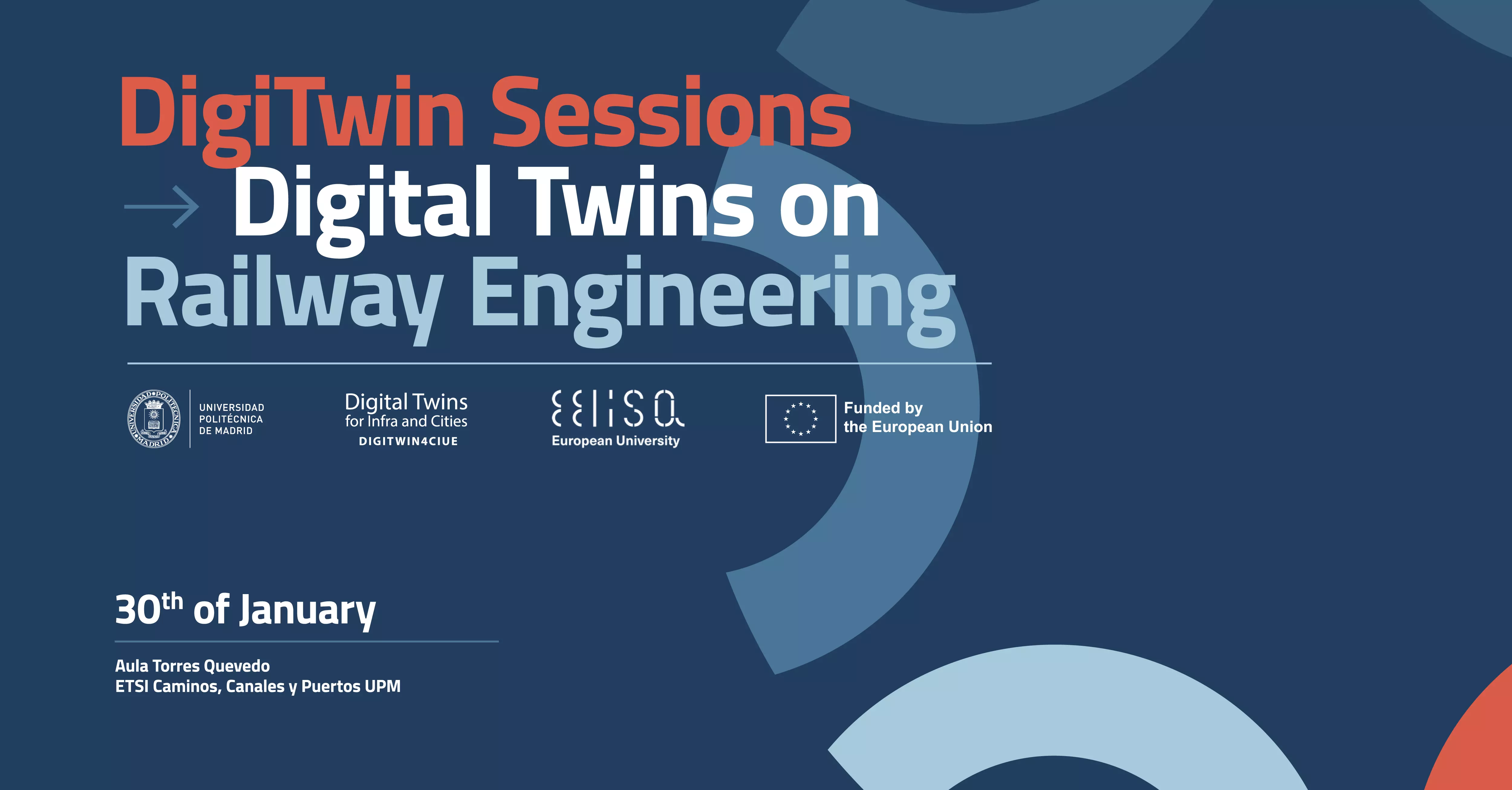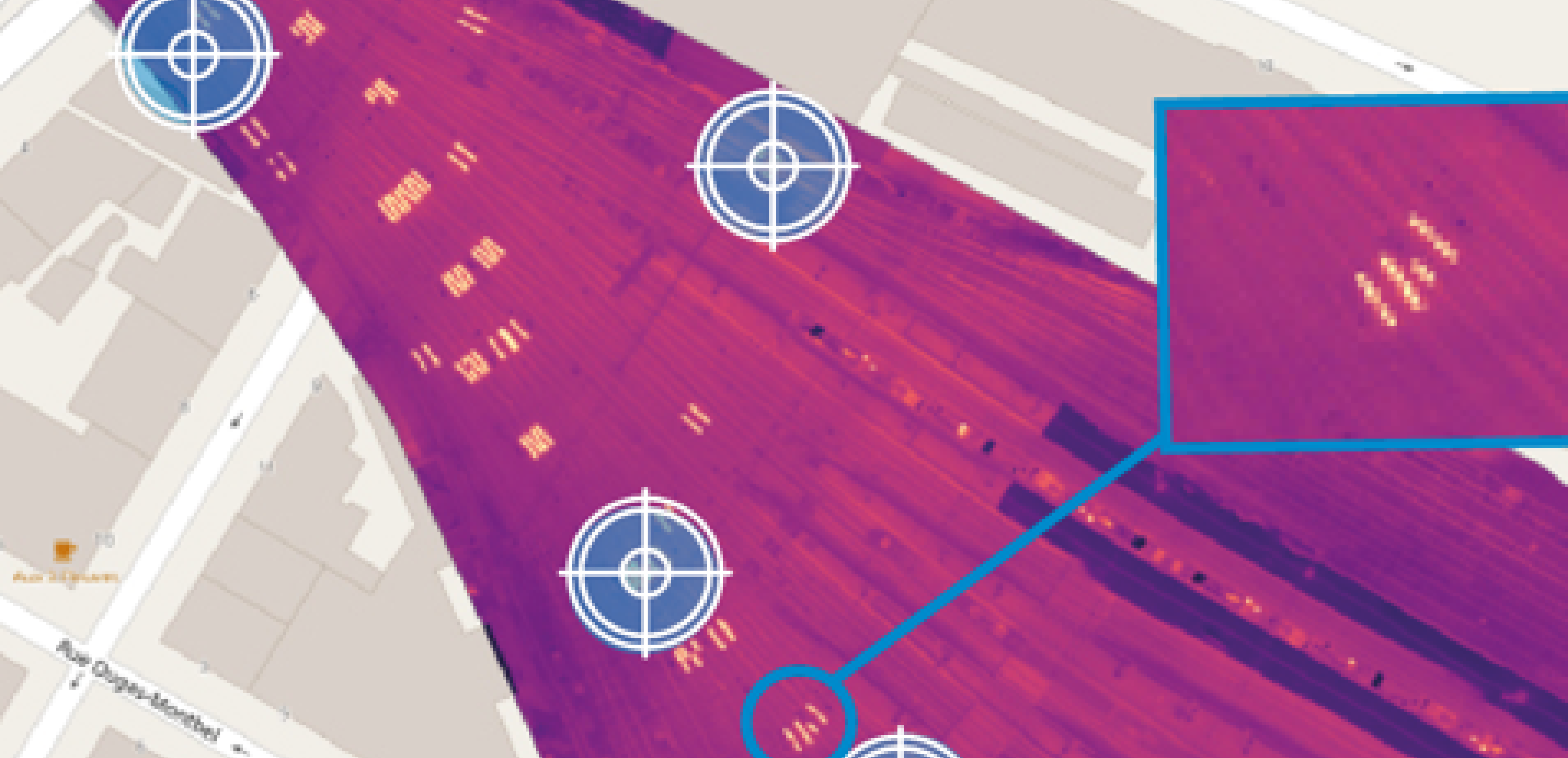[Page created in 2024 for translation of original content]
Digital, cloud, virtual, software, LiDAR, train, railway network... These terms sound relatively 'green.' But what is the actual impact on greenhouse gas emissions (GHG) compared to traditional practices?
That's the question I attempted to answer during my end-of-studies internship at Altametris.
Since the company's activity mainly revolves around the development of industrial data processing and valorization techniques to enable its clients to obtain actionable insights to enhance asset maintenance and optimize operating and maintenance costs, my analysis primarily focused on the environmental footprint of Altametris Suite..
Altametris Suite, est à la fois une plateforme en ligne a data visualization platform and a large-scale data processing service.
To operate, Altametris Suite relies on cloud computing services: accessing computing resources remotely on demand, such as servers, virtual machines, or storage. This provides a lot of flexibility in accessing resources tailored to needs without needing to own or manage the infrastructure.
Since Altametris' objective is to contribute to optimizing railway network maintenance through digital means, processing and analyzing a very large volume of data is necessary.
"Every day, over 3 TB of raw LiDAR data are processed!"
1. The digital sector, far from being dematerialized
In general, it should be noted that digital technology is responsible for 4% of global greenhouse gas emissions[1] : which is twice as much as aviation. In France, it's 2.5-3% [2], [3] of the country's carbon footprint, more than the waste sector. While this percentage may seem insignificant, it actually represents colossal and constantly increasing figures.
How to explain this significant footprint ? In reality, behind this "dematerialized" world, there's an entire global hardware infrastructure at play :
- Each user terminal
- The entire Internet network
- Data centers, the true brains at the heart of every service
The proliferation of devices we use, coupled with the sense of "energy abundance" in which we live, is the primary danger of the digital sector. The digital realm is a distinctly material environment, and this materiality has various impacts : such as ecosystem destruction for mining, the use of numerous rare metals, pollution and water consumption, energy consumption for infrastructure, greenhouse gas emissions, electronic waste...
The following infographic presents a summary of the environmental impacts and their causes in the digital sector.
2. "The" Cloud's danger
If the ambition of the cloud is to mutualize usage and reduce energy demand, thereby avoiding the need for multiple expensive and poorly optimized enterprise servers and their management, and to consolidate users into better-managed larger infrastructures, unfortunately, this has not been observed since 2010 [4].
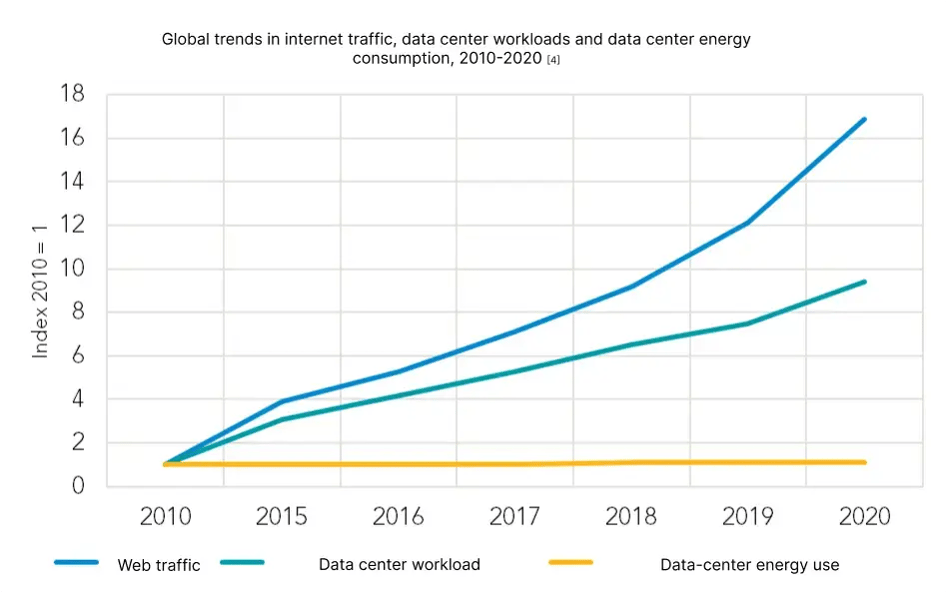
The frequent efficiency gains in data center management are not reflected in final consumption due to increased usage. This perfectly illustrates a rebound effect [5], [6]. The usage of pay-per-use cloud services by companies gives the impression of infinite storage and computing capacity : users no longer face the same physical constraints as before, and they have less control over their data and requests due to increased comfort.
But concerning Altametris Suite: where do the digital services offered fit into the global digital machinery?
3. The carbon footprint of Altametris Suite
Based on the billed consumption of cloud usage, and applying carbon accounting principles with the available emission factors ([7]–[9]), in 2022, the carbon footprint of Altametris Suite amounts to 14.4 tCO2e, equivalent to the emissions from 64,000 km of driving. They represent 10% of the company's total emissions.

What are the reasons for these impacts? My study has shown that they mostly (79%) stem from the use of vCPUs, virtual processors : 44% of this usage is linked to the use of containers, resources that enable data processing entrusted to the company.
To provide the most comprehensive and accurate knowledge possible, it's necessary to compile large volumes of data and perform heavy processing. 30% of vCPU impacts are related to databases, and 24% to App Services, which are the servers used to run the company's services.
Moreover, vCPU usage is extensive due to the size of the processed data, explaining the remaining 21% of emissions due to transit
(data circulated at least once on the internet) and data storage.
The user's share is very low (< 1%) because the scope of the study focuses on the usage of Altametris Suite services, so the magnitudes involved are not significant.
But what about the absolute result? The CO2e emissions are equivalent to the emissions from burning 4,500 liters of diesel, which is about 30 bathtubs. Several reasons explain this significant figure for Altametris :
- Firsly, significant data processing resource usage is directly linked to the large-scale deployment of developed processes: more than twice the length of the LiDAR data railway network was processed.
- The same data is very voluminous: more than 170 TB of data were processed and stored;
- Data processing represents 168,000 hours of calculations in 2022;
- The Suite web platform requires a lot of resources for its operation and availability 24/7.
But all these cloud usages, especially the processing, also reflect the quality of service provided by the company regarding data valorization, enabling users to focus on high-value tasks, namely analysis and intervention.
4. Emissions to reduce emissions
The previous section allowed for an overall assessment of the company's digital activities. These treatments, carried out in large volumes, aim to contribute to improving network maintenance performance, nationally. This is the mission the company is dedicated to.
These treatments have interesting economic purposes for network maintenance, but what about from an environmental standpoint? Isn't there more pollution generated by traditional methods compared to digital approaches? And what about the improvement of national railway network performance contributing to decarbonizing transportation? This was also a question the company was asking.
To begin with, we conducted a comparison exercise on the use case of ballast (the bed of stones on which the tracks rest). Its role is crucial in maintaining track stability to ensure safe train operation.
Until now, tracks have been inspected on foot by agents to verify the conformity of ballast levels. This relatively subjective and safety-oriented approach leads to an overconsumption of ballast.
| Without digital methods | With digital methods |
| Subjective and imprecise pedestrian inspections with a lot of car travel | Diesel trains scanning the entire network with multiple sensors including LiDAR |
| Ballast ordered and spread in excess through a systematic safety-oriented approach | Extensive but precise treatments to optimize network performance (availability and reliability at minimal cost) by using the exact quantity of ballast |
The exploitation of LiDAR data from the network allows for a precise assessment of ballast volumes on the tracks, enabling optimization of the quantities of ballast to be renewed as well as the optimization of maintenance routes, which are costly and time-consuming. Therefore, it ensures a level of quality in line with current safety standards..
On which side does the balance of advantages and disadvantages of each approach tilt?
The calculations show that although data processing and its transformation into knowledge entail a significant carbon footprint for the company, once implemented, they can contribute to reducing the environmental footprint of ballast maintenance by 11 to 24%, which represents between 350 and 800 tCO2e that could be avoided each year.
The most significant gains come directly from data exploitation: every ton of ballast that can be optimized actively contributes to reducing emissions in this maintenance area.
In the end, my mission has shed light on Altametris' environmental impact of its digital uses, which are at the core of its operations. The work I have done helps to better understand where the impacts lie at its scale, while also understanding the broader issue they are part of.
We have seen that cloud usage is significant and impactful, as the volume of data to be processed is also substantial, but it enables a significant reduction in the carbon footprint of maintenance operations.
Altametris has questioned itself about the ethics of its activities, and this approach is important to emphasize and encourage in raising awareness of its environmental responsibility. This initial work and result are encouraging, highlighting the attention to be paid to the proper use of digital technology and the need to continue analyzing all use cases (with macro-level measurements) to identify the benefits brought by Altametris Suite to railway network performance, including the reduction of greenhouse gas emissions.
I am deeply grateful to the entire Altametris team for their warm welcome during these 6 months. Thank you to all those who assisted me in my research and took the time to share their knowledge with kindness. I extend my thanks to the Lyon team for their daily cheerfulness, and especially to Luc PERRIN, for his attentive support throughout my internship, his valuable advice, and his positive attitude.
Sources
[1}Bordage et GreenIT.fr, « Etude : Empreinte environnementale du numérique mondial», sept. 2019. [En ligne]. Disponible sur: https://www.greenit.fr/wp-content/uploads/2019/10/2019-10-GREENIT-etude_EENM-rapport-accessible.VF_.pdf
[2] F. Bordage, L. de Montenay, et O. Vergeynst, « Etude : « iNum2020 », Impact environnementaux du numérique en France », janv. 2021.
[3] Y. Aiouch et al., « Evaluation environnementale des équipements et infrastructures numériques en France », Ademe et Arcep, France, janv. 2022.
[4] IEA, Global trends in internet traffic, data centres workloads and data centre energy use, 2010-2020. 2022. Consulté le: 1 mars 2023. [En ligne]. Disponible sur: https://www.iea.org/data-and-statistics/charts/global-trends-in-internet-traffic-data-centres-workloads-and-data-centre-energy-use-2010-2020
[5] Bon Pote, « Propos 5 : Paradoxe de Jevons et effet rebond », Bon Pote, 4 avril 2020. Consulté le: 11 décembre 2022. [En ligne]. Disponible sur: https://bonpote.com/propos-5-paradoxe-de-jevons-et-effet-rebond/
[6] F. Schneider, « L’effet rebond », L’Ecologiste, vol. 4, no 3, p. 45, oct. 2003.
[7] « NegaOctet ». avril 2023. Consulté le: 27 avril 2023. [En ligne]. Disponible sur: https://negaoctet.org/
[8] J. Aslan, K. Mayers, J. G. Koomey, et C. France, « Electricity Intensity of Internet Data Transmission: Untangling the Estimates: Electricity Intensity of Data Transmission », J. Ind. Ecol., vol. 22, no 4, p. 785‑798, août 2018, doi: 10.1111/jiec.12630.
[9] Cloud Carbon Footprint, « Methodology », Cloud Carbon Footprint. https://cloud-carbon-footprint.github.io/docs/methodology (consulté le 1 juin 2023).

